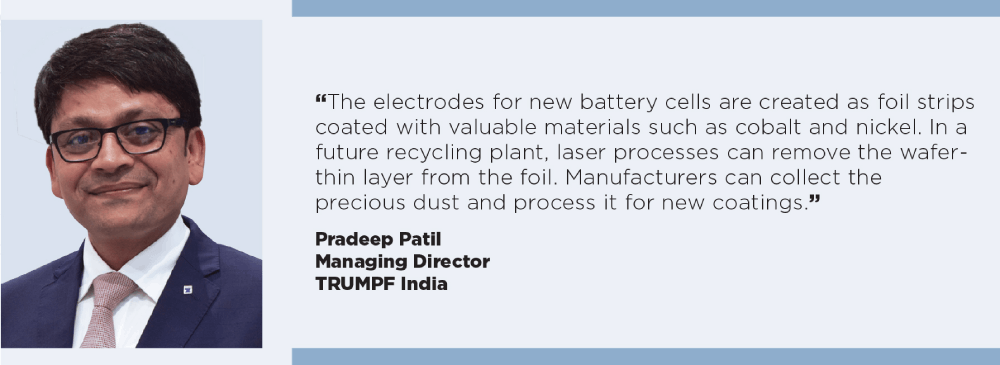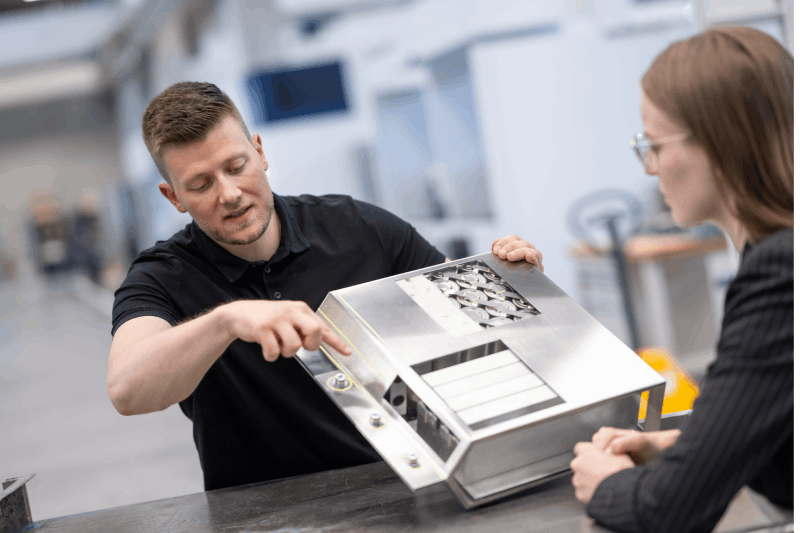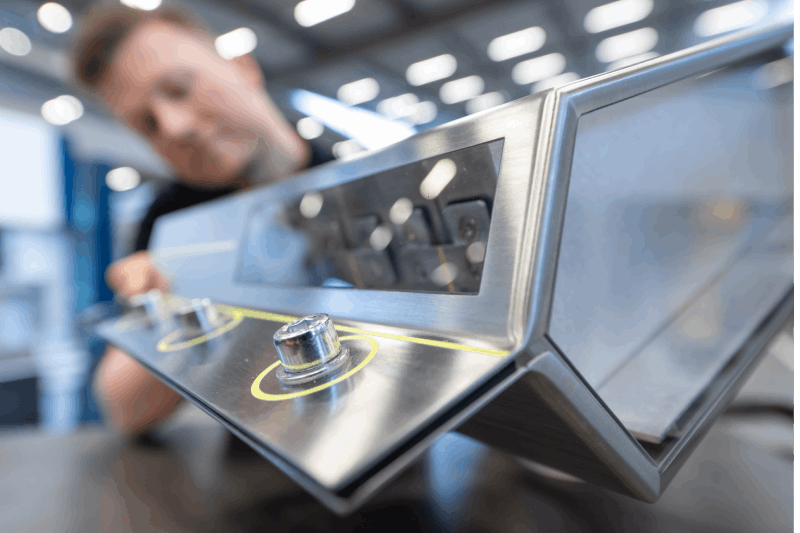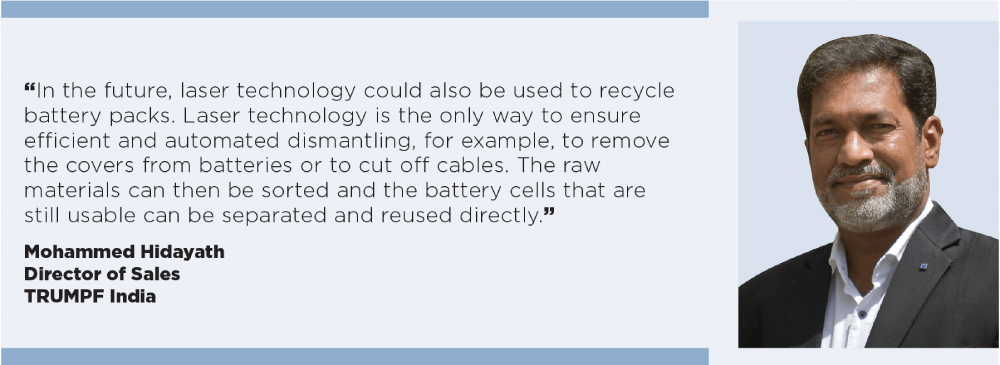How Lasers Are Revolutionizing EV Battery Recycling

Laser-based battery recycling is poised to radically change the EV industry, offering a sustainable solution for waste vehicle battery management. As this technology continues to evolve, it is essential to address the challenges and limitations, ensuring a scalable and cost-effective approach.
With millions of EVs being sold around the world, one of the critical issues being faced worldwide is the recycling of large lithium-ion batteries. These batteries pose a serious environmental problem due to their complex composition and hazardous materials.
To be recycled, EV batteries must first be dismantled, which is no simple task because batteries are not standardized. The packs from various car models are of different sizes, containing differently shaped battery cells joined together by welds and other connections that must be broken down. This complexity makes the process more expensive and dangerous.
However, cutting-edge technology is emerging as a game-changer in the field of EV battery recycling - Lasers.
Pradeep Patil, Managing Director, TRUMPF India, says, “Carmakers and battery manufacturers can now recycle used or defective batteries from electric cars on an industrial scale using laser technology from TRUMPF. TRUMPF has developed laser systems that cut used batteries safely and remove the valuable raw materials from the battery foil.”
Mohammed Hidayath, Director of Sales, TRUMPF India, says, “TRUMPF has extensive expertise in laser welding and cutting for the production of EV batteries. It has been working with most of the leading car and battery manufacturers for a long time, and we have used this vast experience to develop new processes.”
TRUMPF presented its new laser EV recycling processes for the first time at the Battery Show Europe 2024, in Stuttgart.

A large market for recycling EV batteries
All EV batteries contain valuable raw materials such as cobalt, lithium, or nickel. However, the extraction of these raw materials is expensive and not always sustainable. Manufacturers also have to accept long and uncertain supply chains. In addition, the EU requires a recycling rate of up to 90 percent for batteries.
Alexander Sauer, Head, Fraunhofer Institute for Manufacturing Engineering and Automation IPA, said that the industry has to recycle on a large scale and the market for laser processes for recycling batteries, which is currently emerging, is huge. It is estimated that in Europe alone, the industry will have to recycle 5,70,000 tonne of battery material annually from 2030.
The global EV battery recycling market is projected to grow from US$ 1.4 billion in 2020 to US$ 12.8 billion by 2027, with laser-based recycling playing a key role.\
| Laser technology enables the extraction of high-quality materials, suitable for reuse in new battery production. Laser-based recycling can recover up to 90 percent of valuable materials like lithium, nickel, and cobalt, while traditional recycling methods can recover only around 50-60 percent of these materials. |
How lasers are used in battery recycling
Lasers are employed in several ways to recycle waste vehicle batteries:
Disassembly: High-precision lasers cut through battery casings and internal components, allowing for safe and controlled disassembly.
Material separation: Lasers selectively vaporize and remove specific materials, enabling the separation of valuable components from hazardous ones.
Purification: Laser-induced breakdown spectroscopy (LIBS) analyzes the chemical composition of materials, ensuring the quality and purity of recovered substances.
Benefits of laser-based battery recycling
Enhanced safety: Lasers minimize the risk of explosions and toxic emissions associated with traditional mechanical disassembly methods.
Increased efficiency: Laser processing speeds up the recycling process, reducing costs, and environmental impact. Laser-based recycling can reduce processing time by up to 70 percent compared to traditional methods. It can also reduce costs by up to 50 percent due to increased efficiency and reduced labor needs.
Improved material recovery and reusability: Laser technology enables the extraction of high-quality materials, suitable for reuse in new battery production. Laser-based recycling can recover up to 90 percent of valuable materials like lithium, nickel, and cobalt, while traditional recycling methods can recover only around 50-60 percent of these materials.
 |
 |
Scalability: Laser-based recycling can be easily scaled up to accommodate growing demand, supporting the transition to a circular economy.
Patil says, “The electrodes for new battery cells are created as foil strips coated with valuable materials such as cobalt and nickel. In a future recycling plant, laser processes can remove the
wafer-thin layer from the foil. Manufacturers can collect the precious dust and process it for new coatings. Until now, it was not uncommon for kilometers of coated foils to end up as waste in the garbage.”
Hidayath adds, “In the future, laser technology could also be used to recycle battery packs.
Laser technology is the only way to ensure efficient and automated dismantling, for example, to remove the covers from batteries or to cut off cables. The raw materials can then be sorted
and the battery cells that are still usable can be separated and reused directly. Until now, dismantling electric car batteries has been a manual process. It is laborious, slow, and sometimes dangerous for workers.”
Reducing environmental pollution: Traditional recycling methods can generate hazardous waste and emissions, contributing to environmental pollution. Laser-based recycling produces minimal waste and emissions, reducing the environmental footprint of EV battery recycling.

Challenges for the future
While laser-based battery recycling holds great promise, several challenges need to be addressed.
Cost reduction: High initial investment costs must be decreased to make laser technology more accessible.
Standardization: Industry-wide standards for laser-based recycling processes are essential for ensuring consistency and quality.
Research and development: Continued innovation is necessary to optimize laser technology and expand its applications.
Laser-based battery recycling is poised to revolutionize the industry, offering a sustainable solution for waste vehicle battery management. As this technology continues to evolve, it is essential to address the challenges and limitations, ensuring a scalable and cost-effective approach. By embracing laser-based recycling, we can unlock a more circular and environmentally conscious future for the Battery industry.
Tech Talks is a column by industry veteran and journalist Reji Varghese that talks about the latest advancements in Machine Tools, provides snippets from history, interesting facts, etc. about the Machine Tool industry.
 |
Reji Varghese MD RV Forms & Gears fngreji@gmail.com |




 Facebook
Facebook.png) Twitter
Twitter Linkedin
Linkedin Subscribe
Subscribe